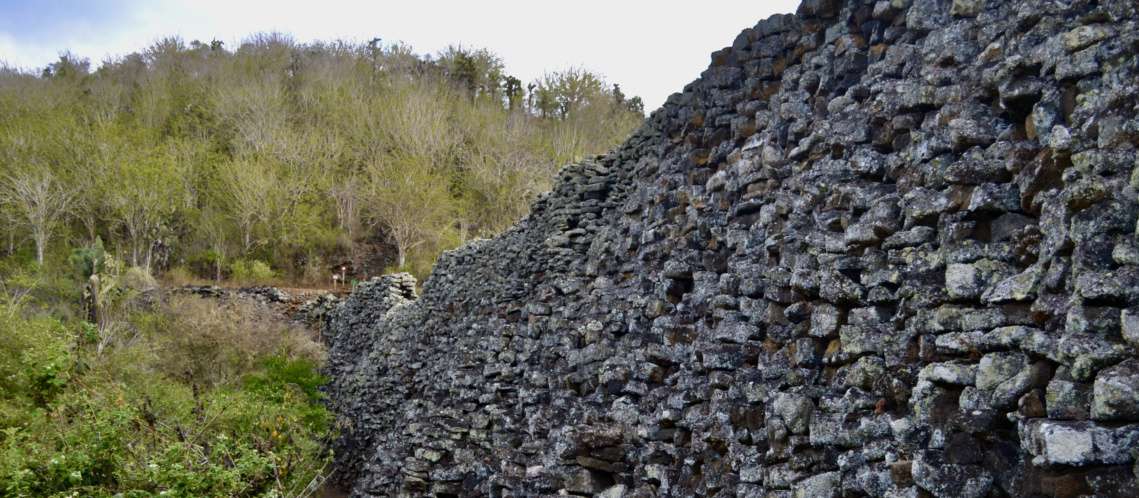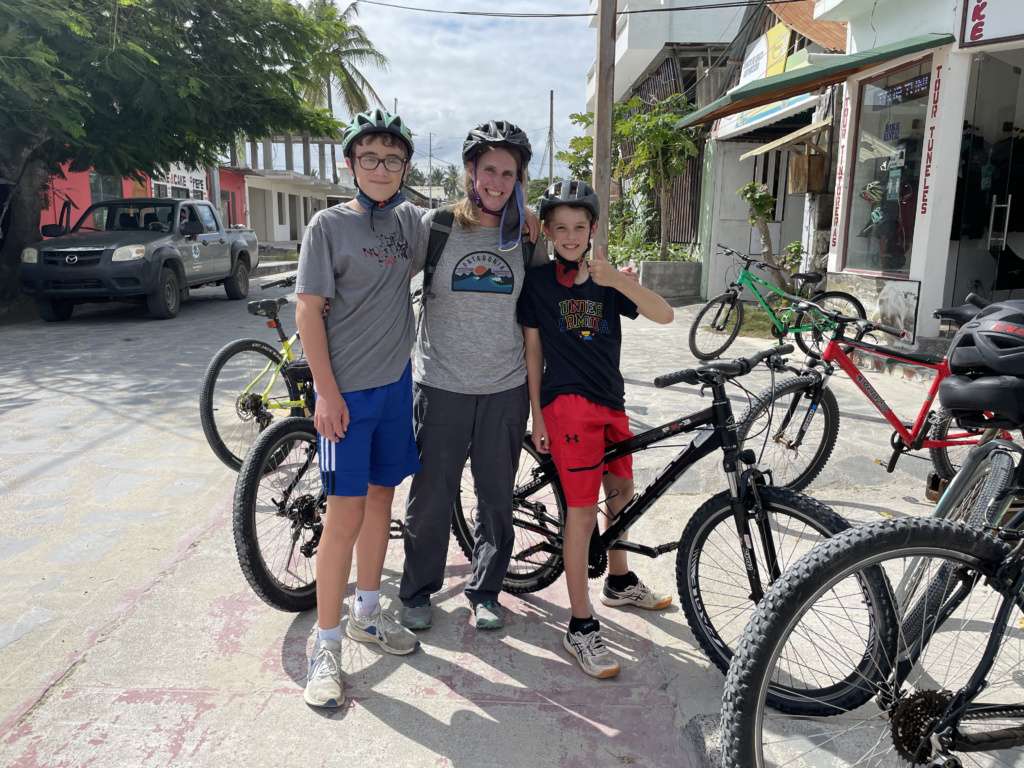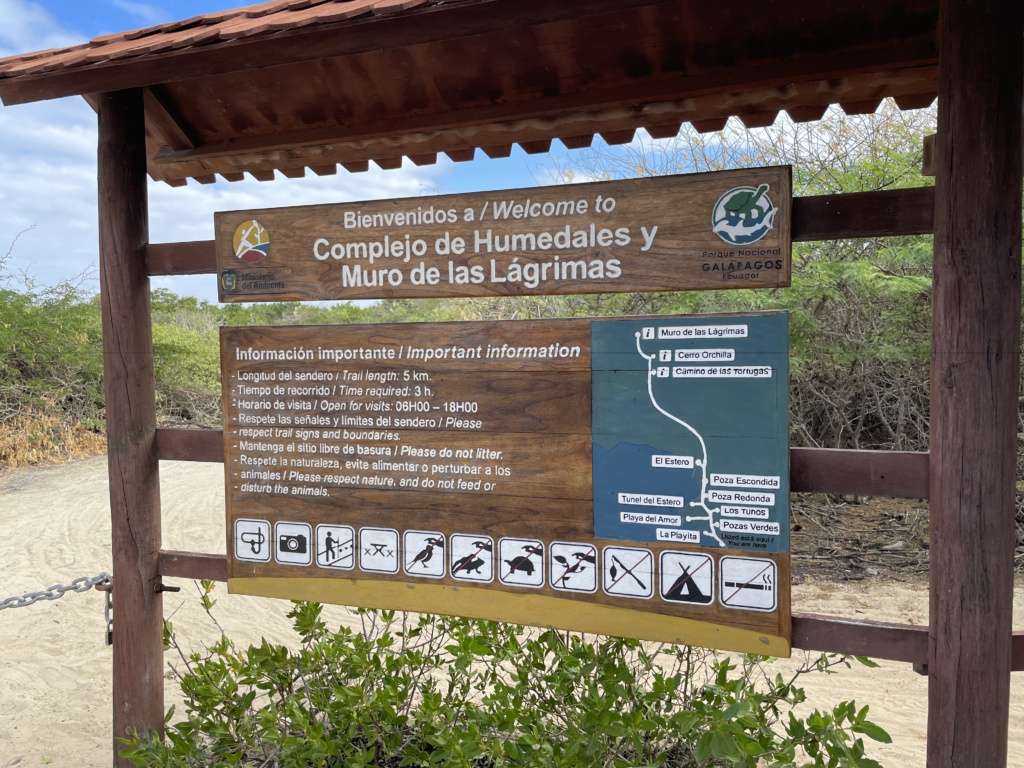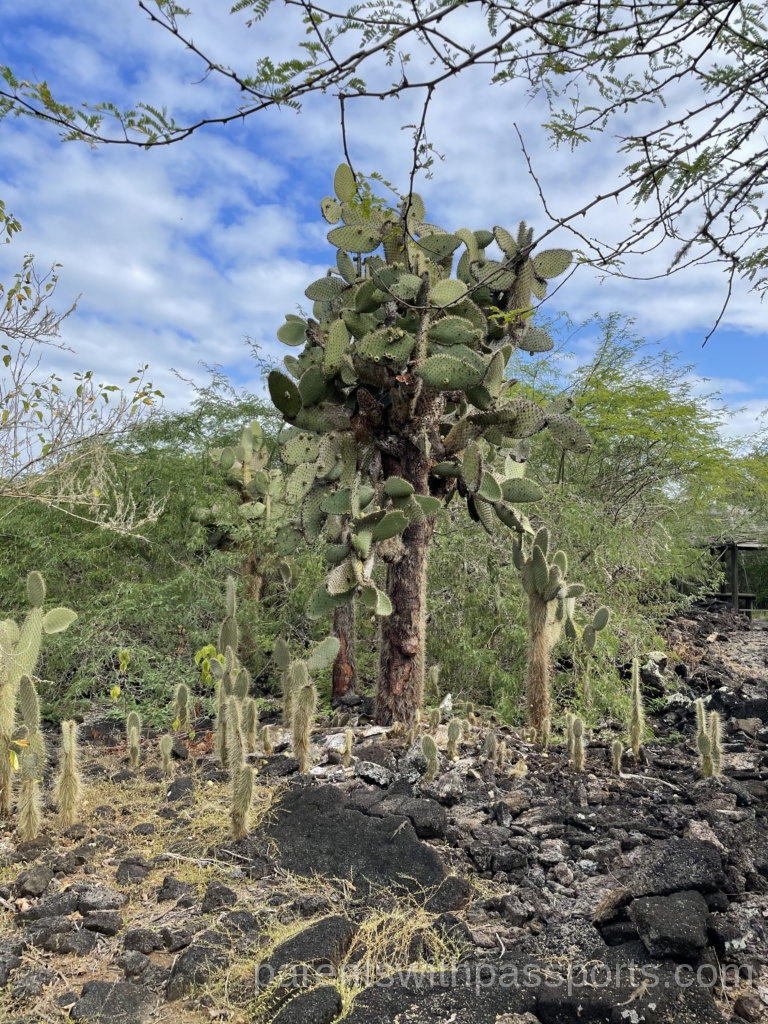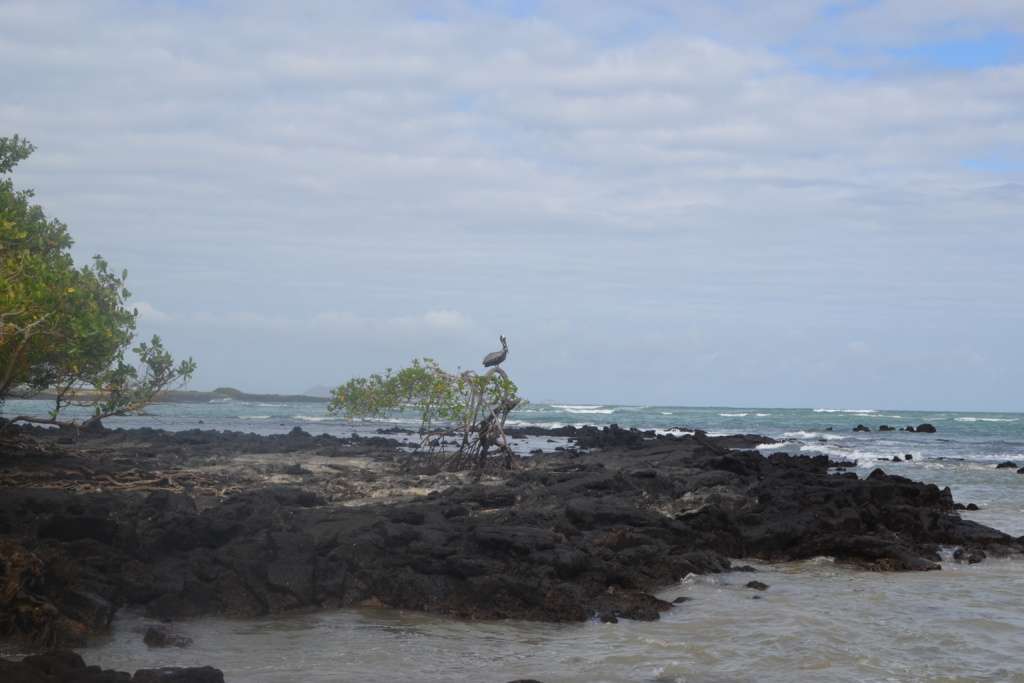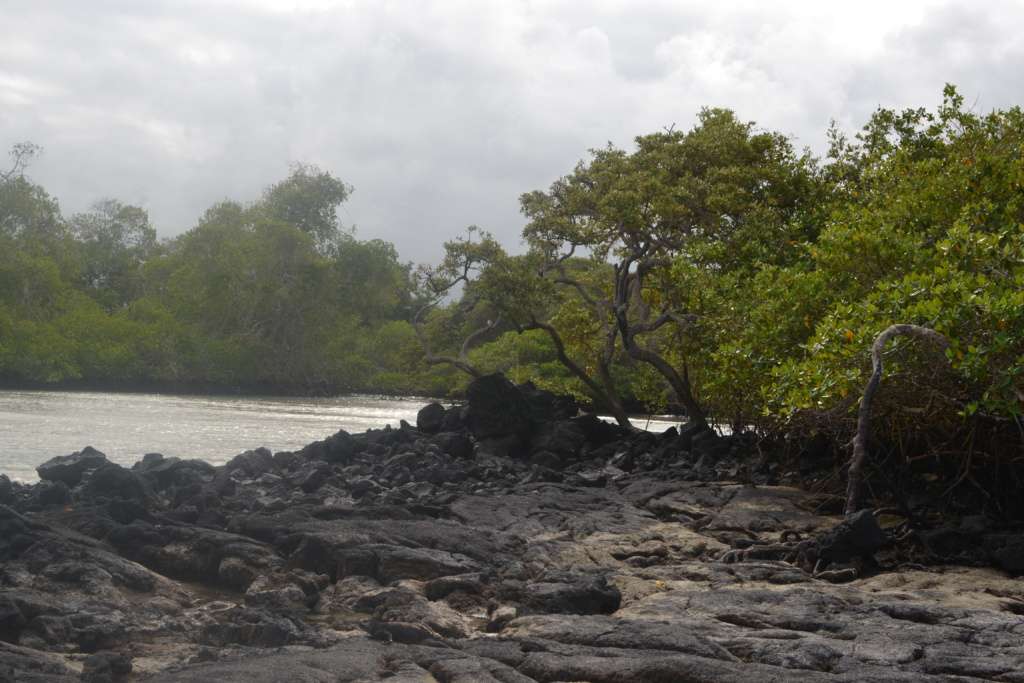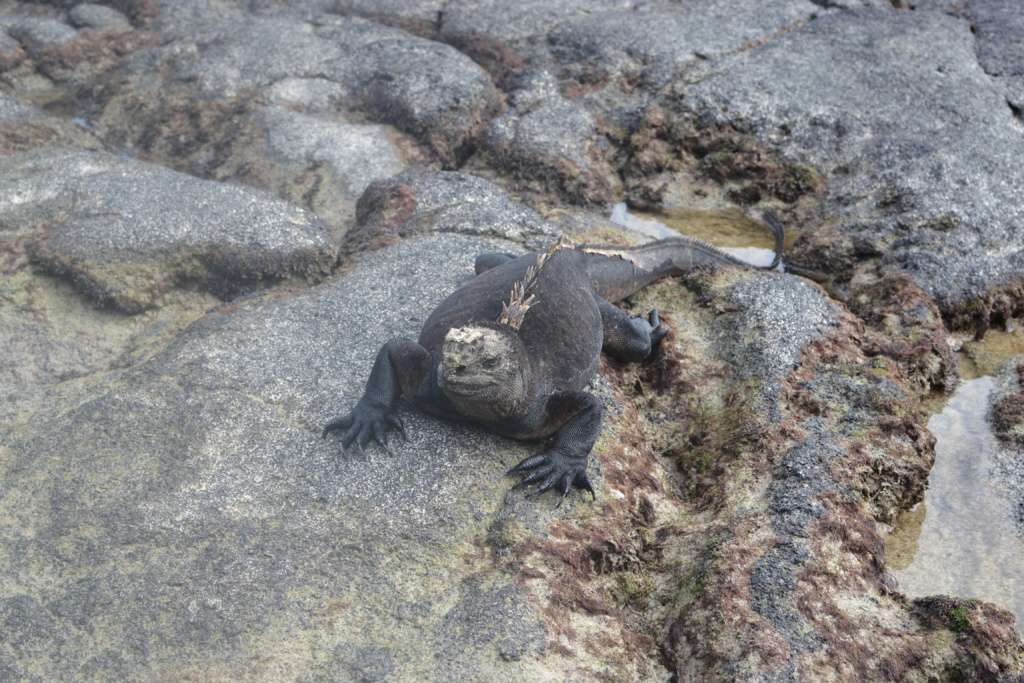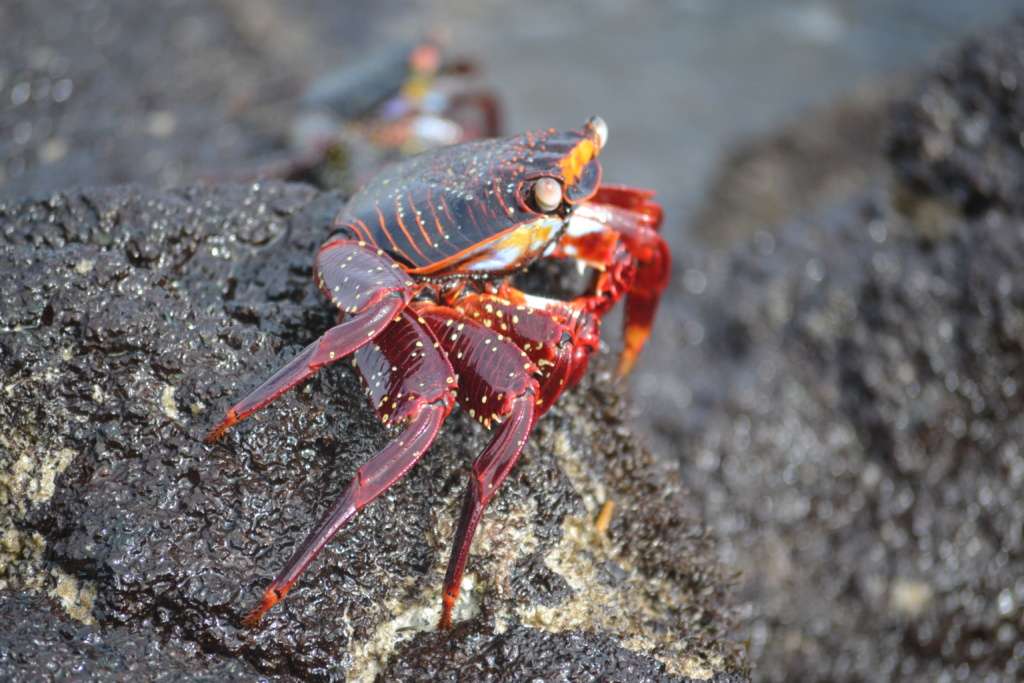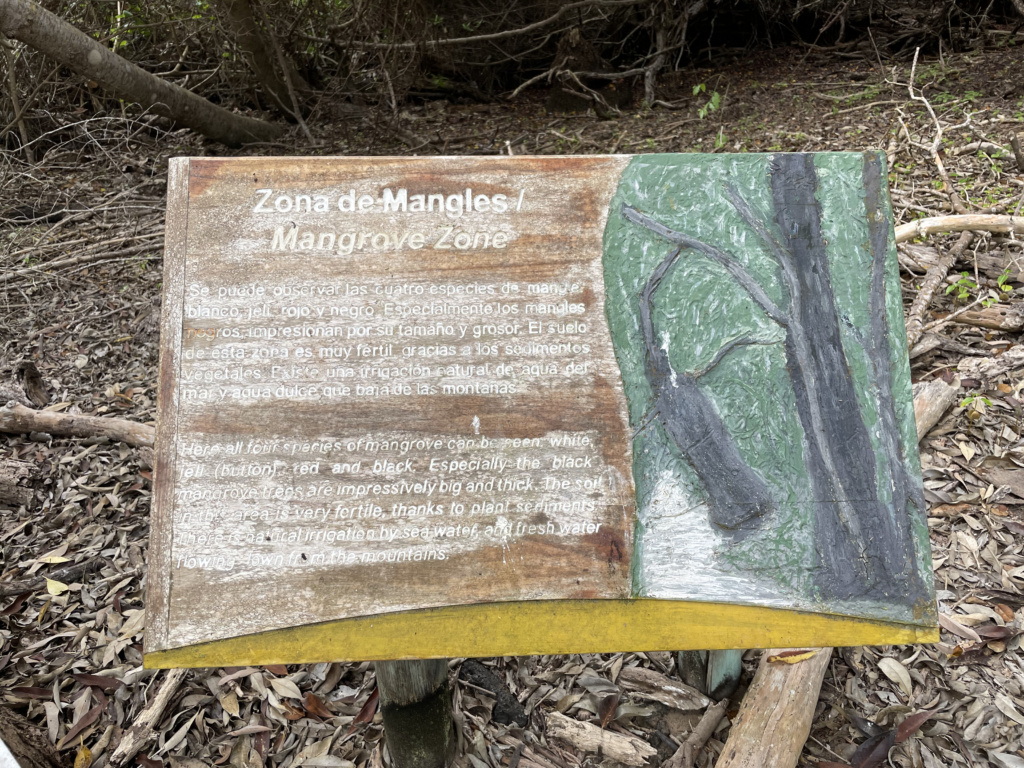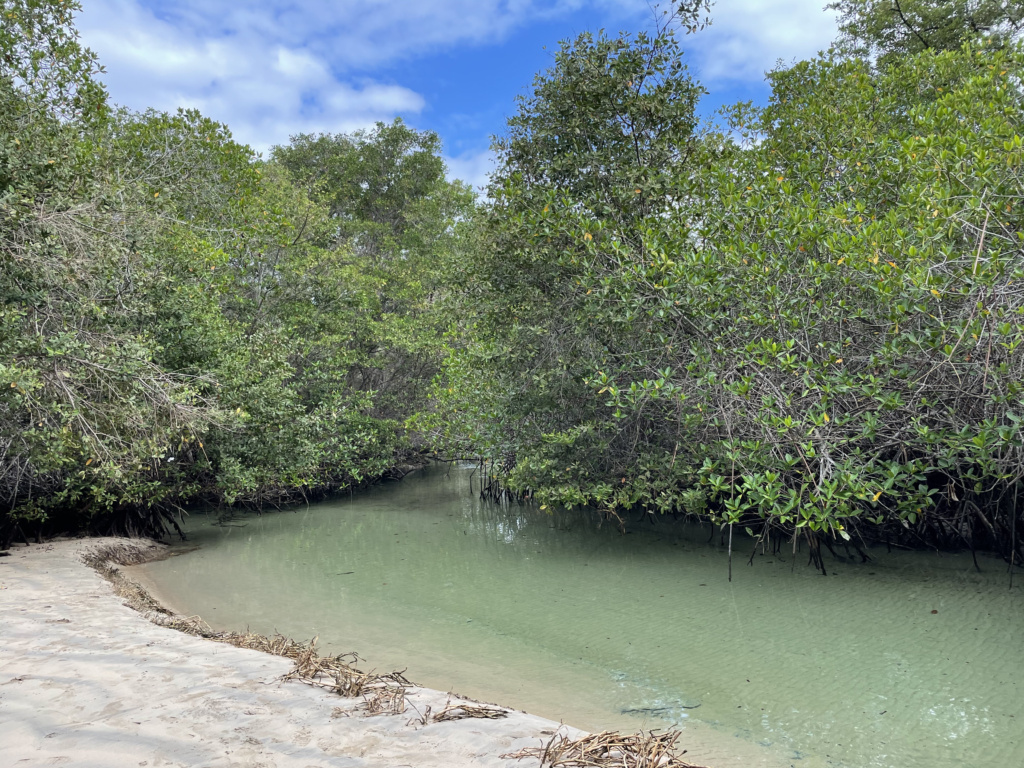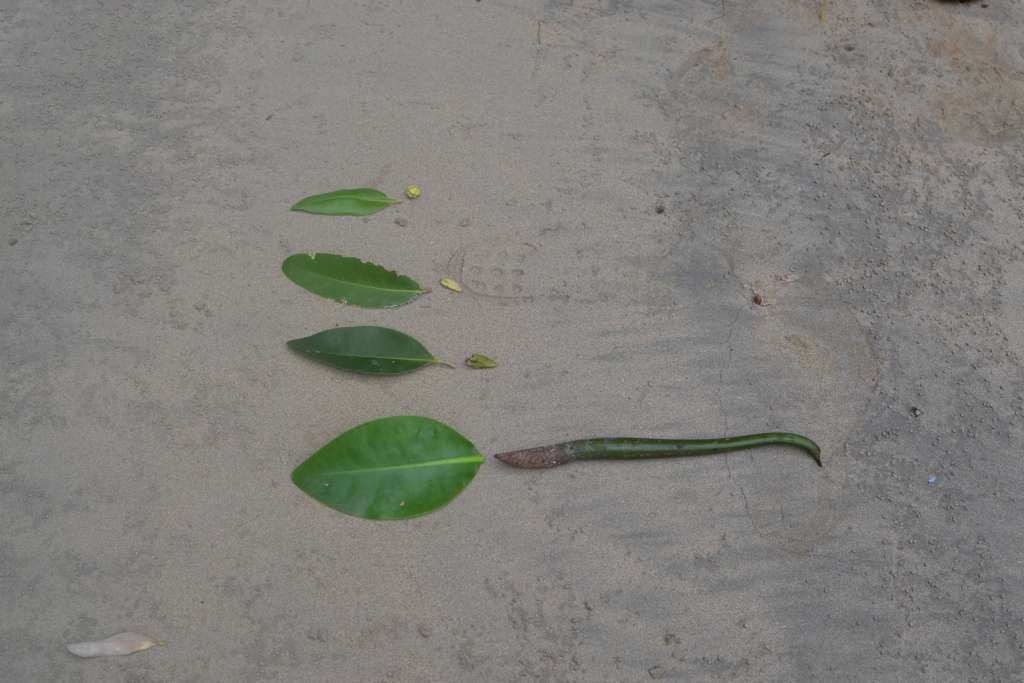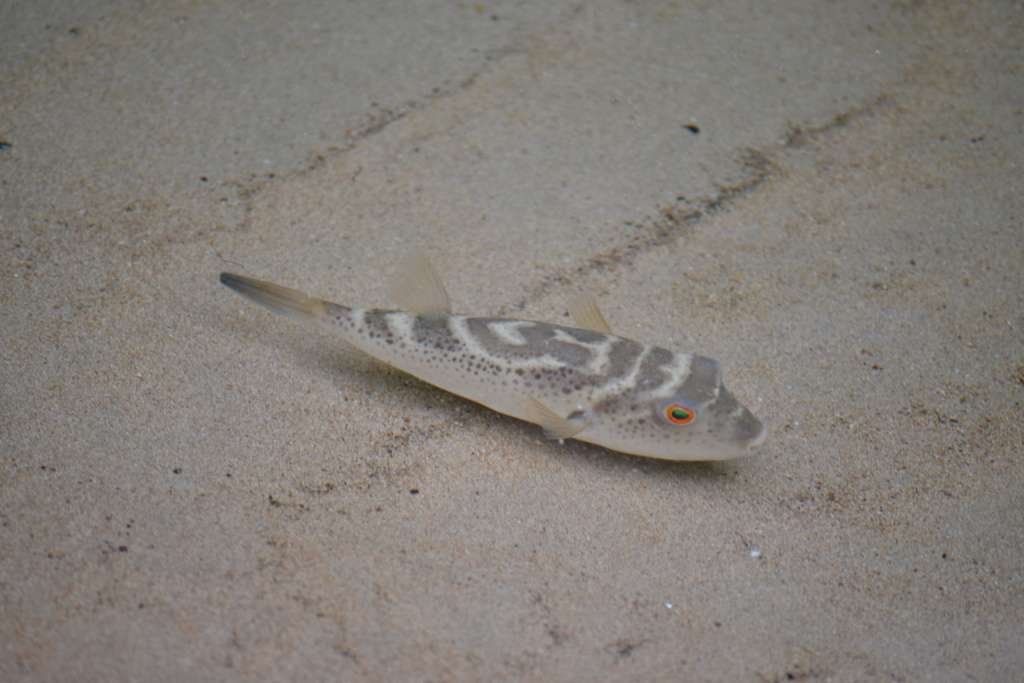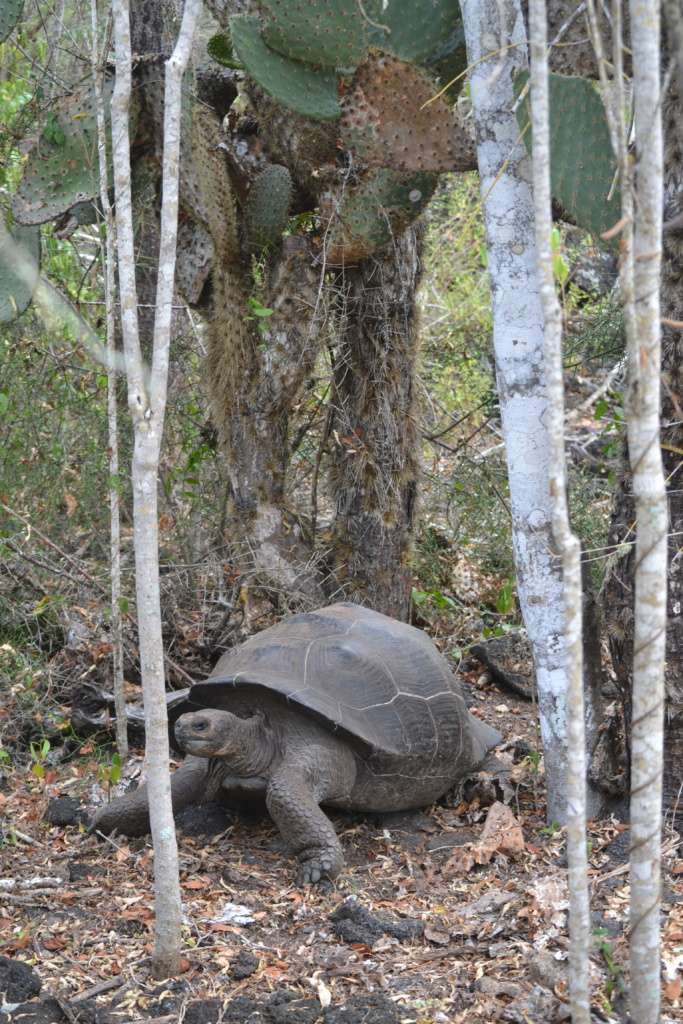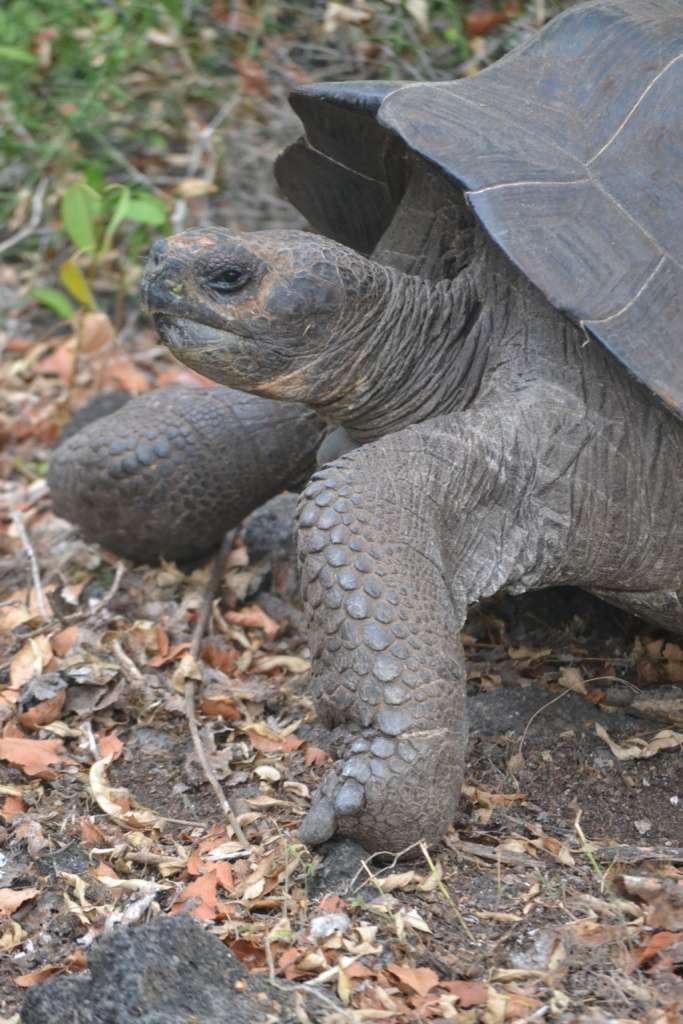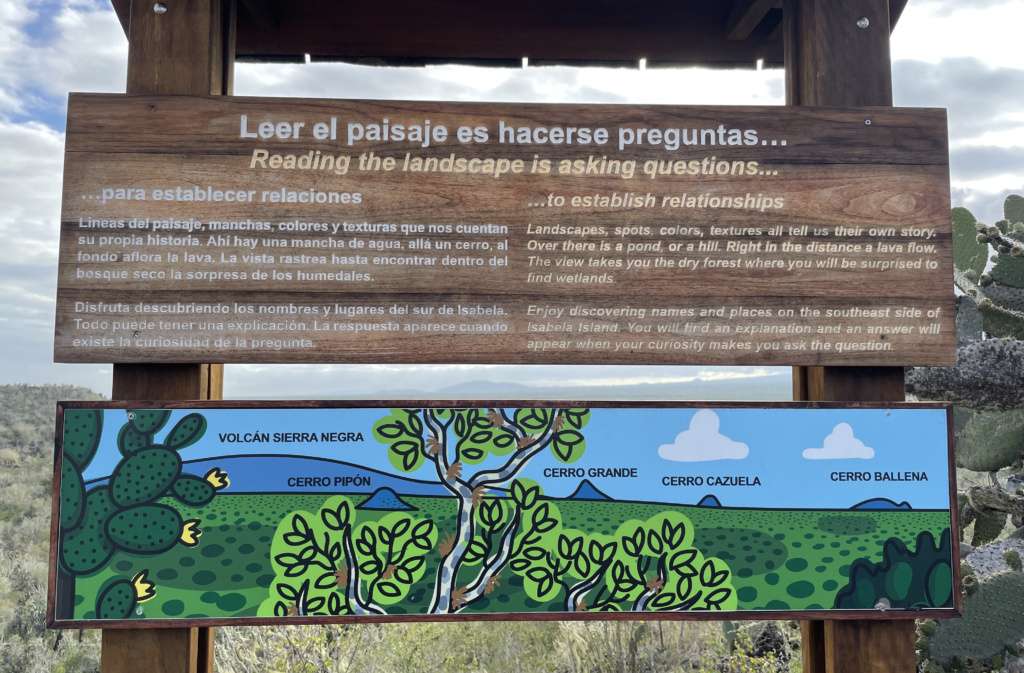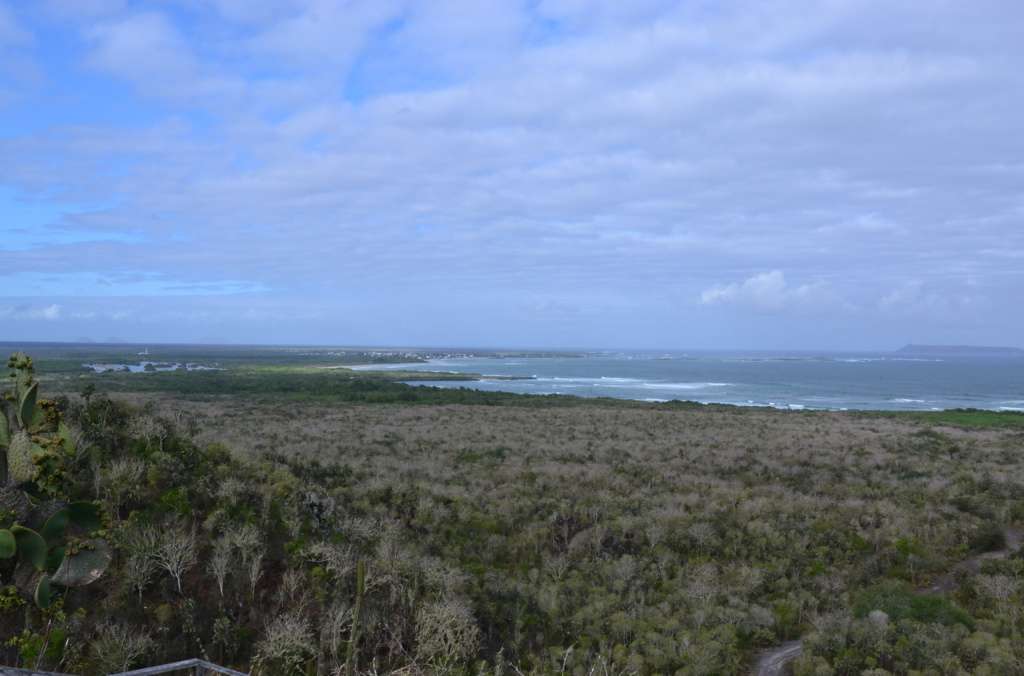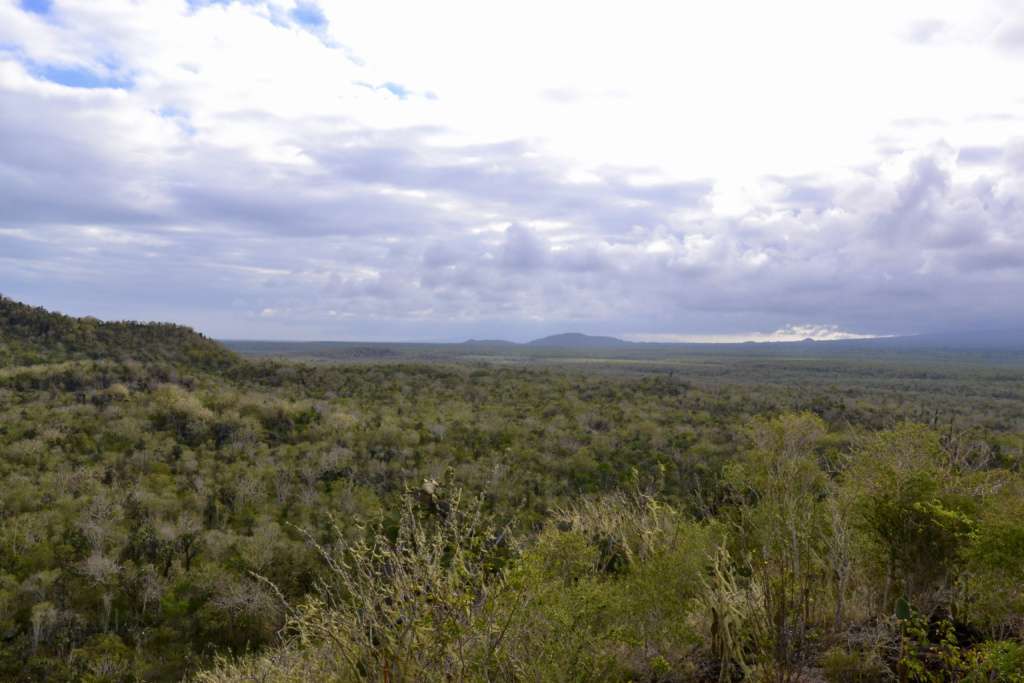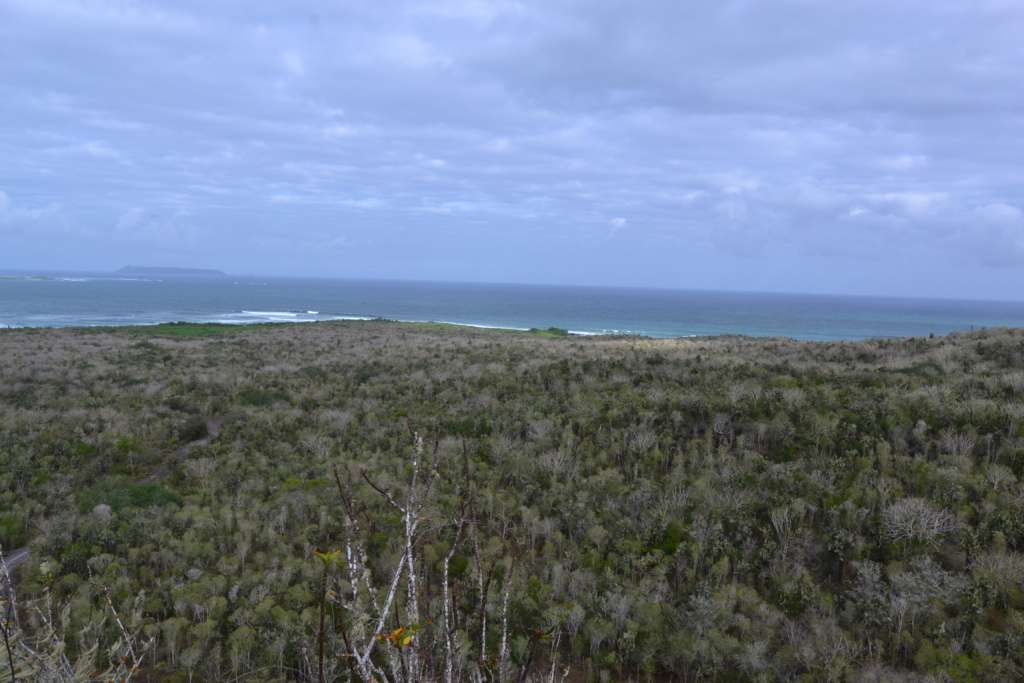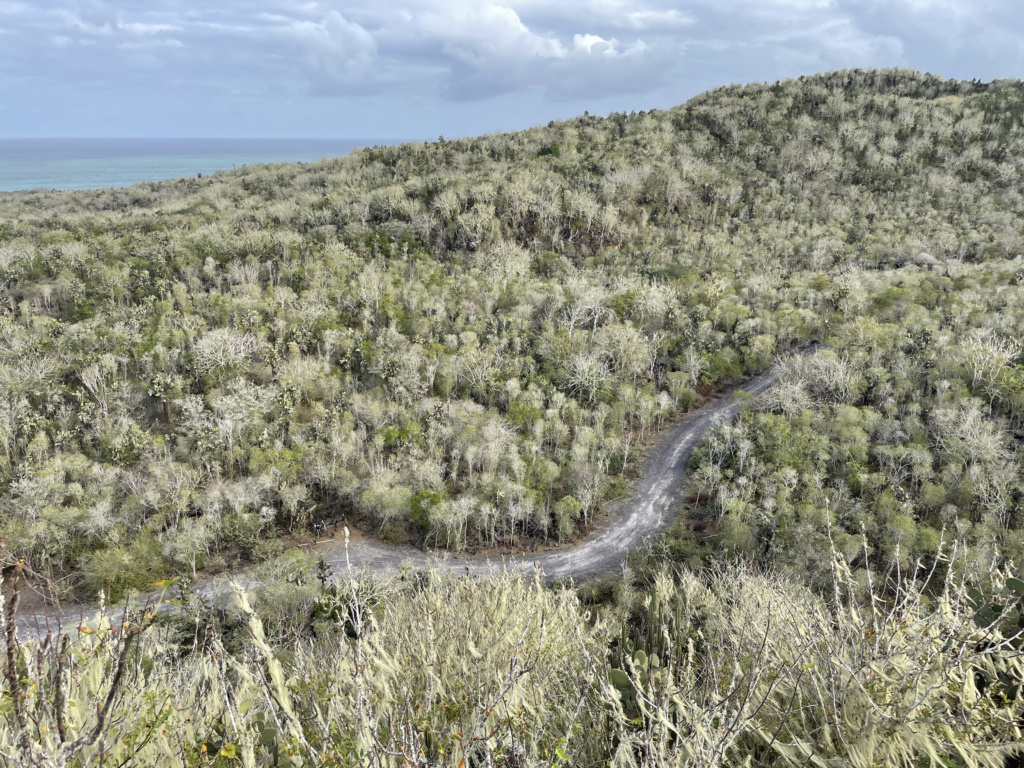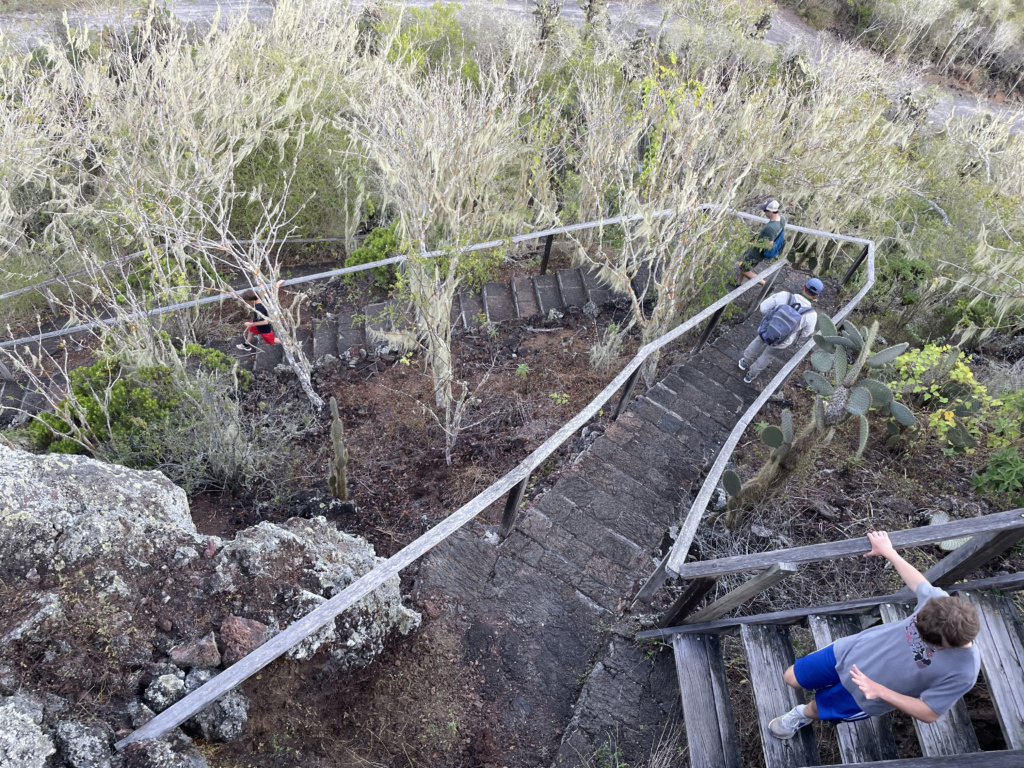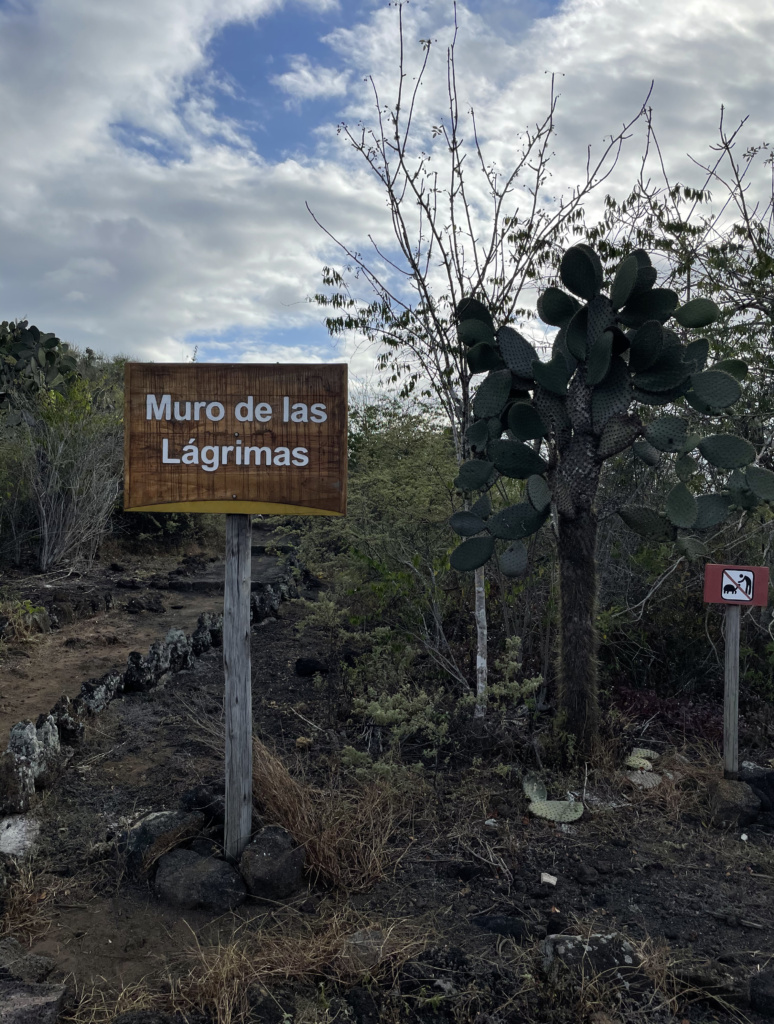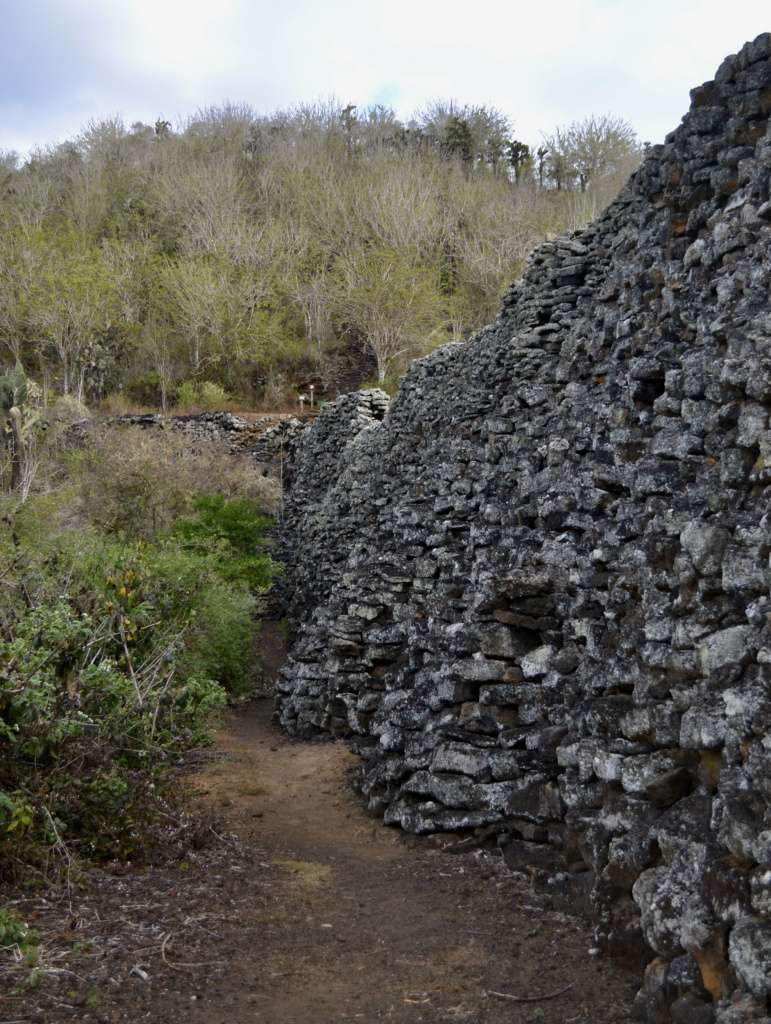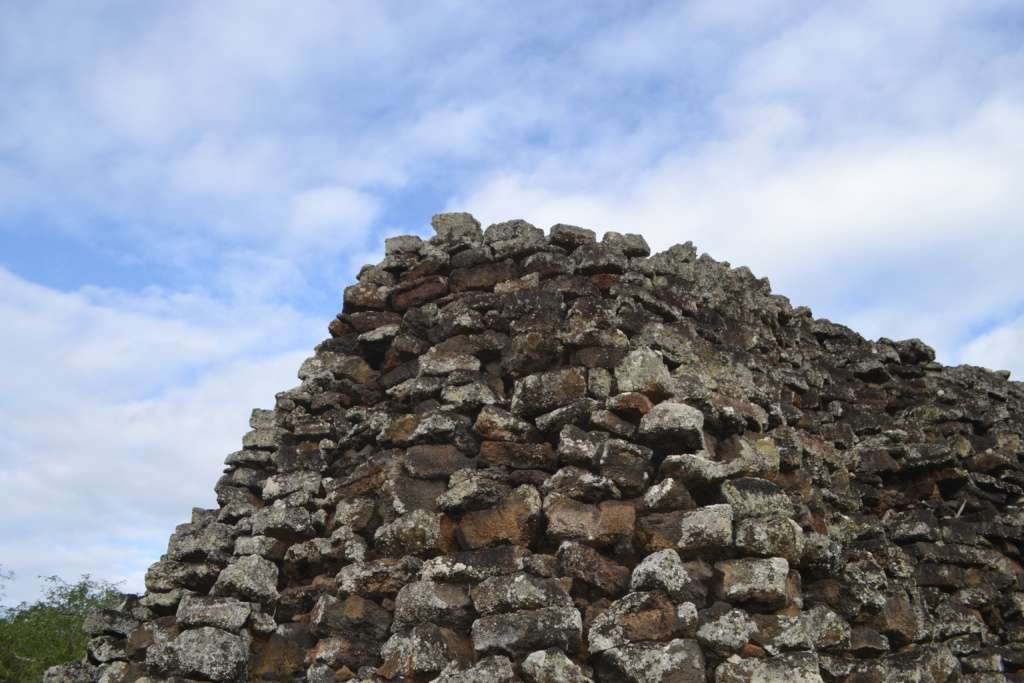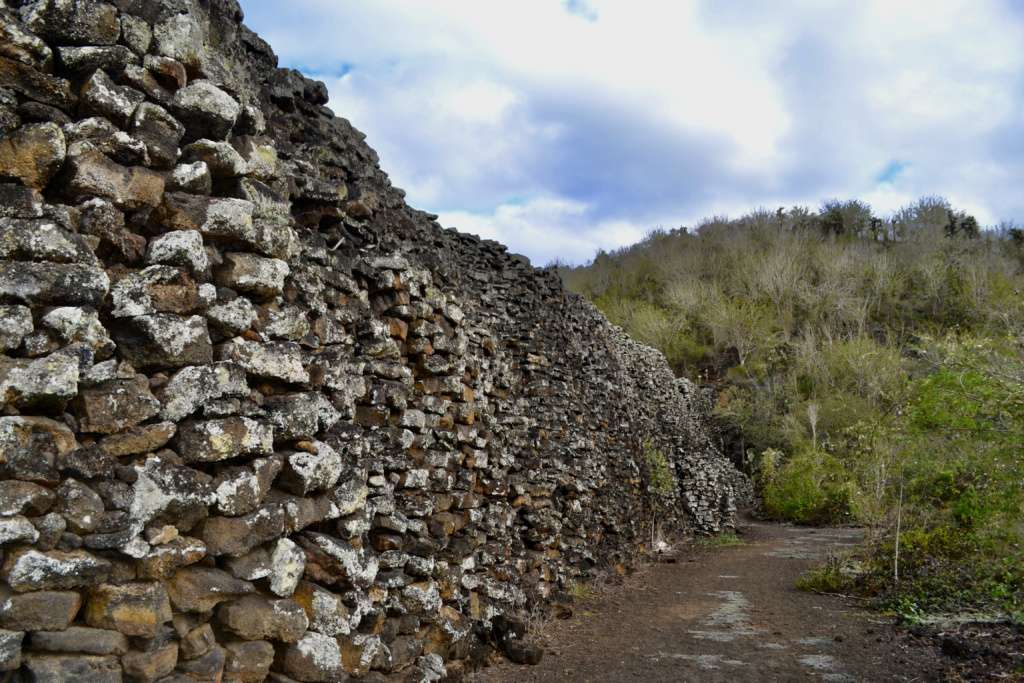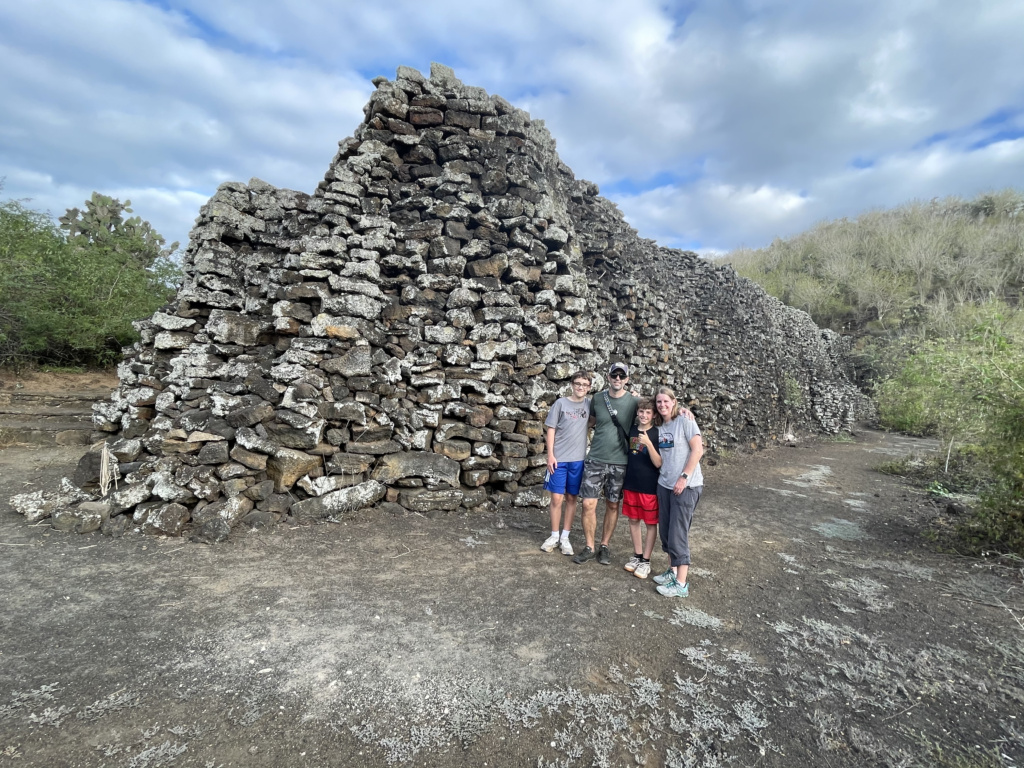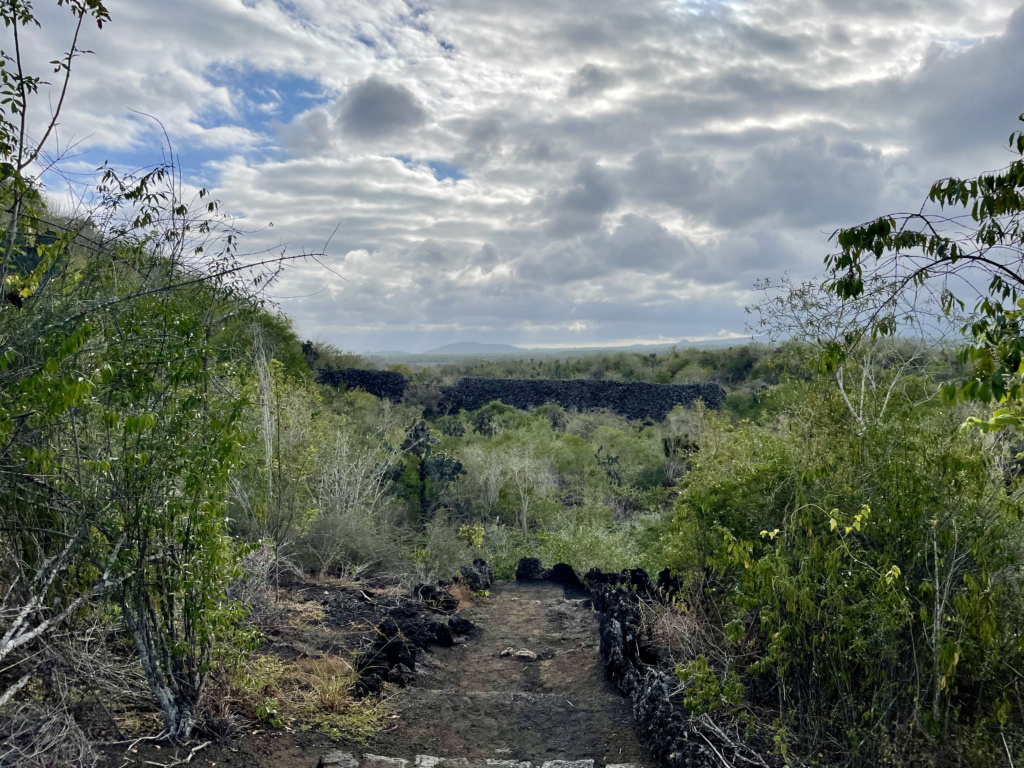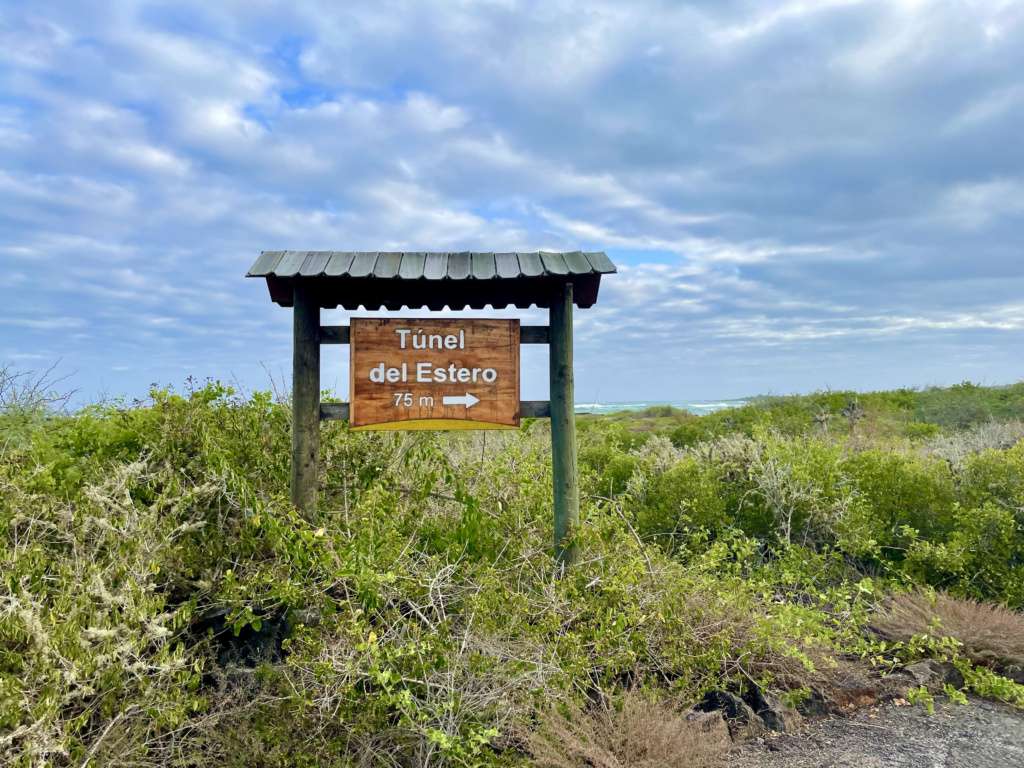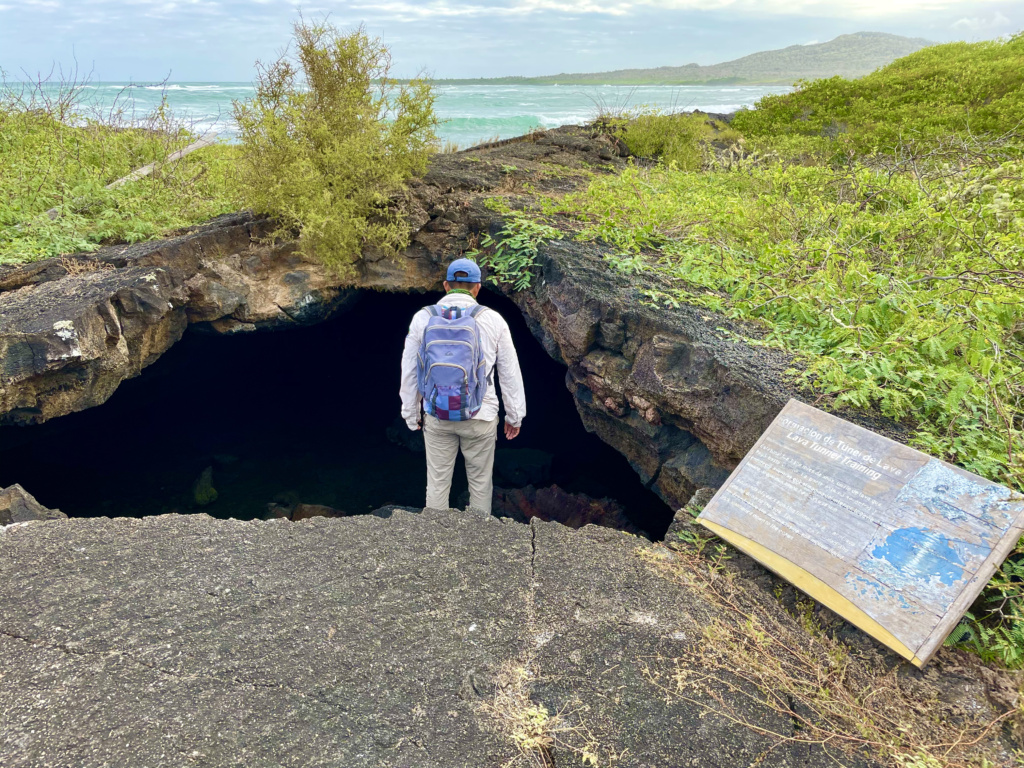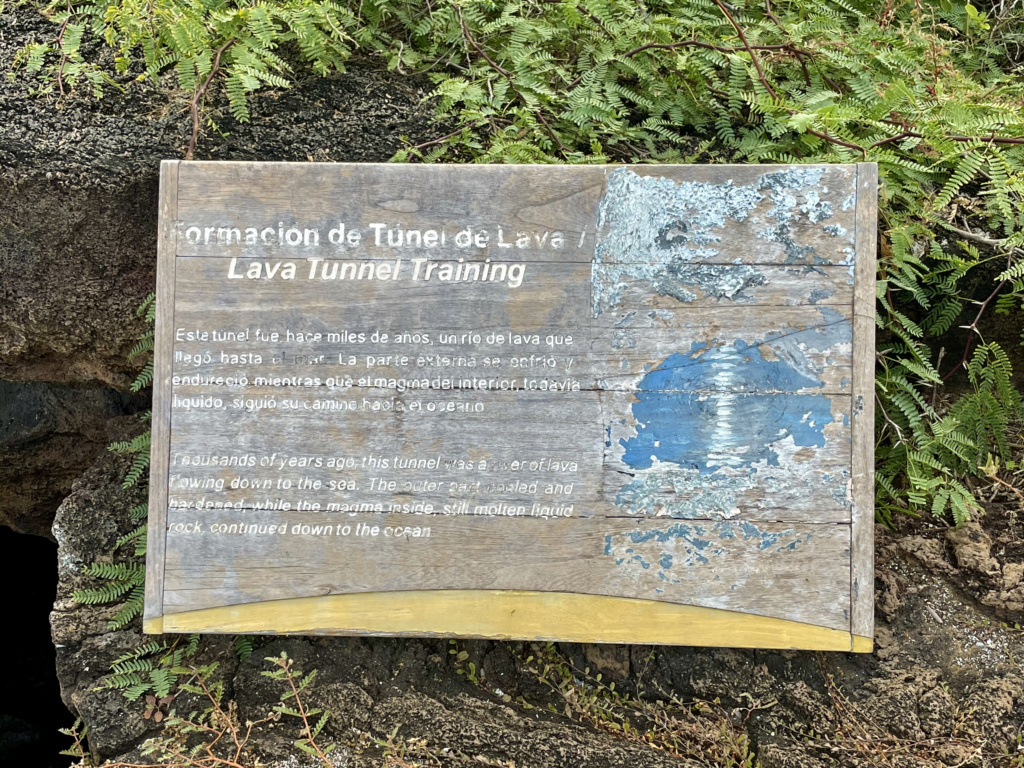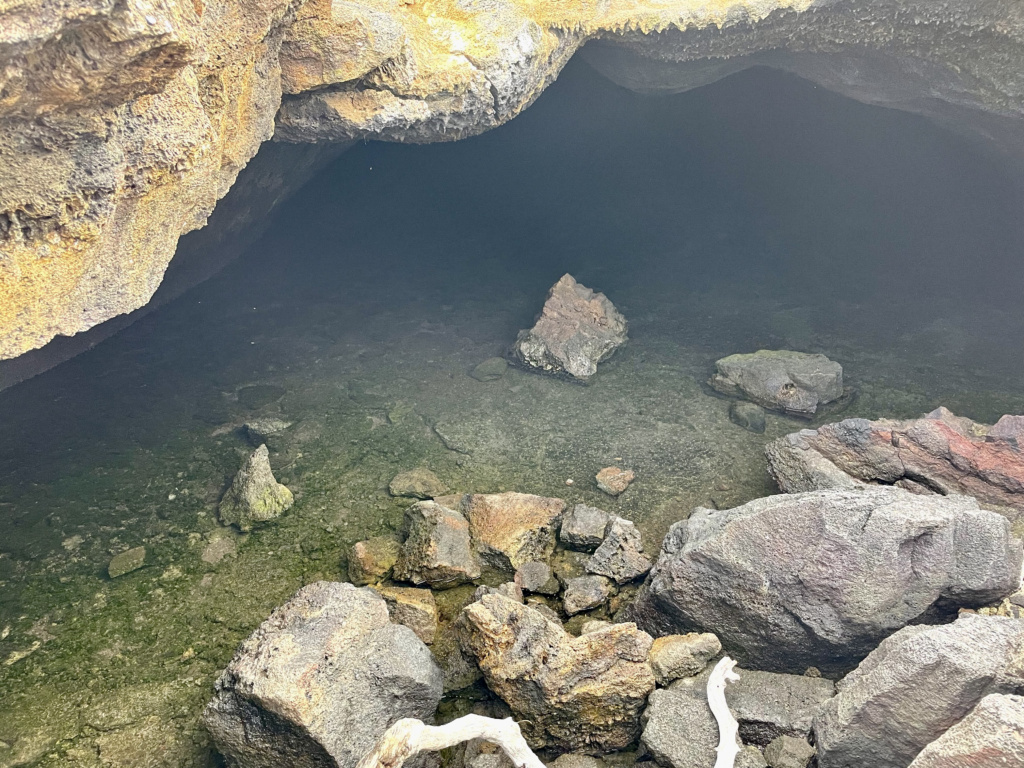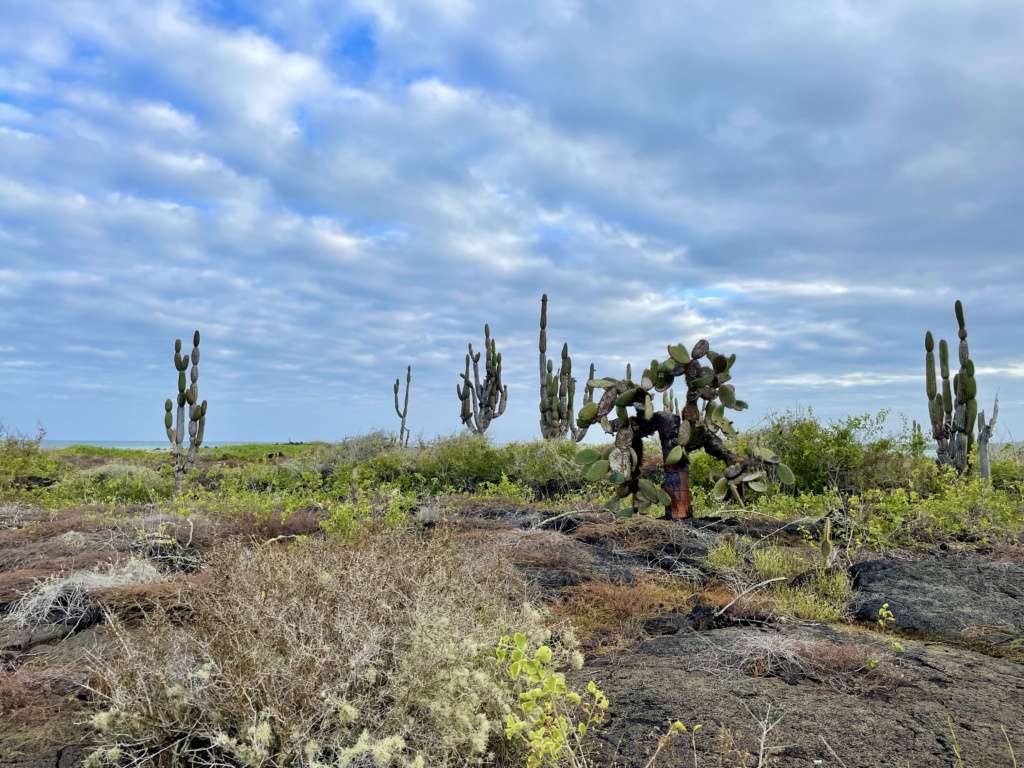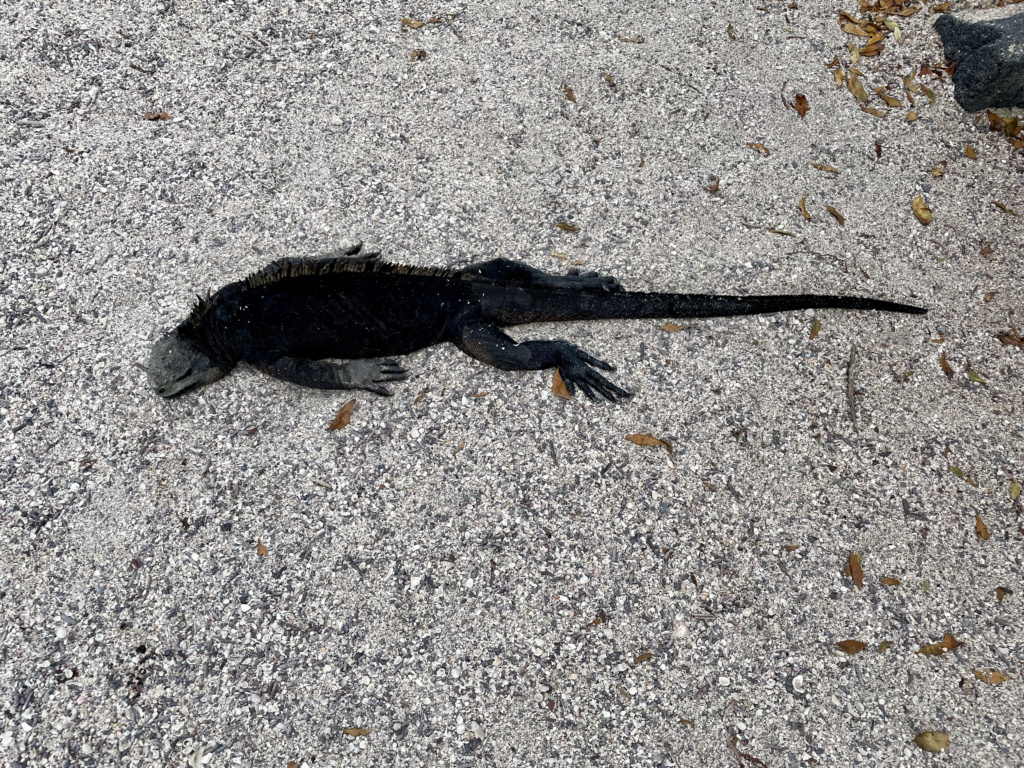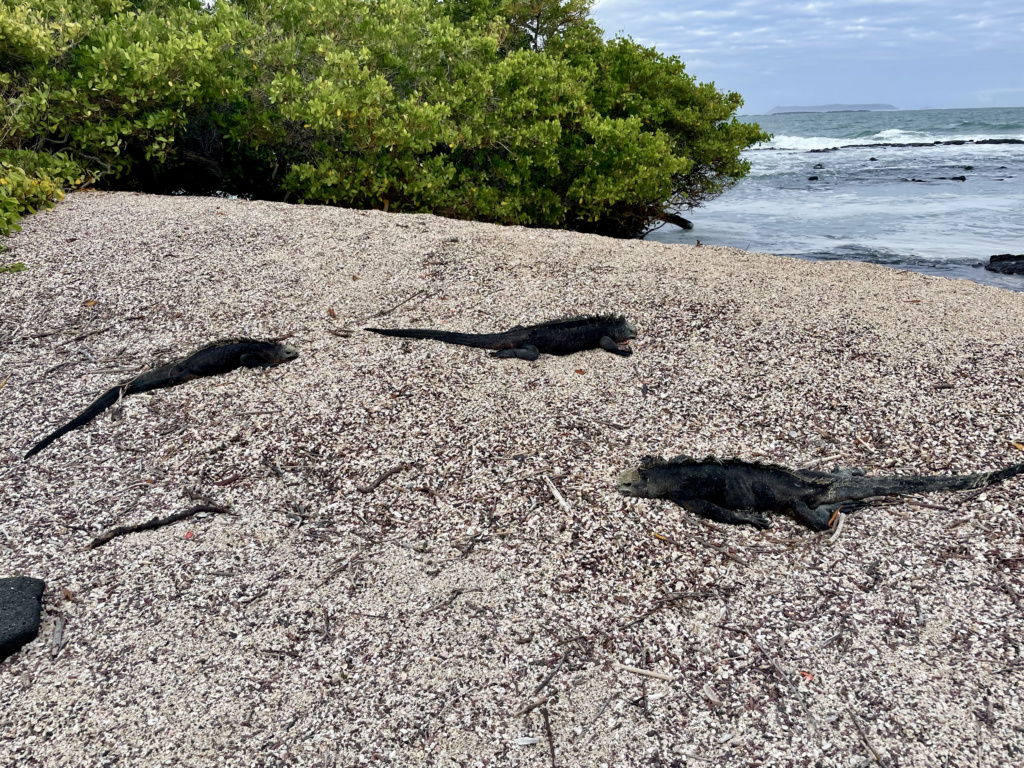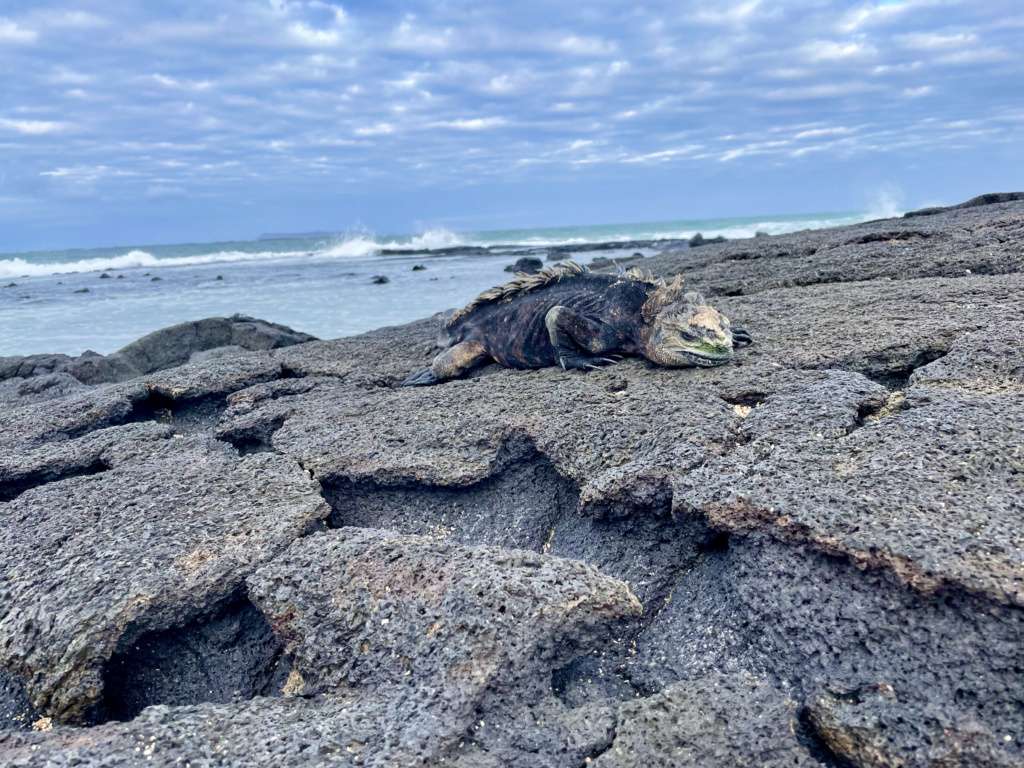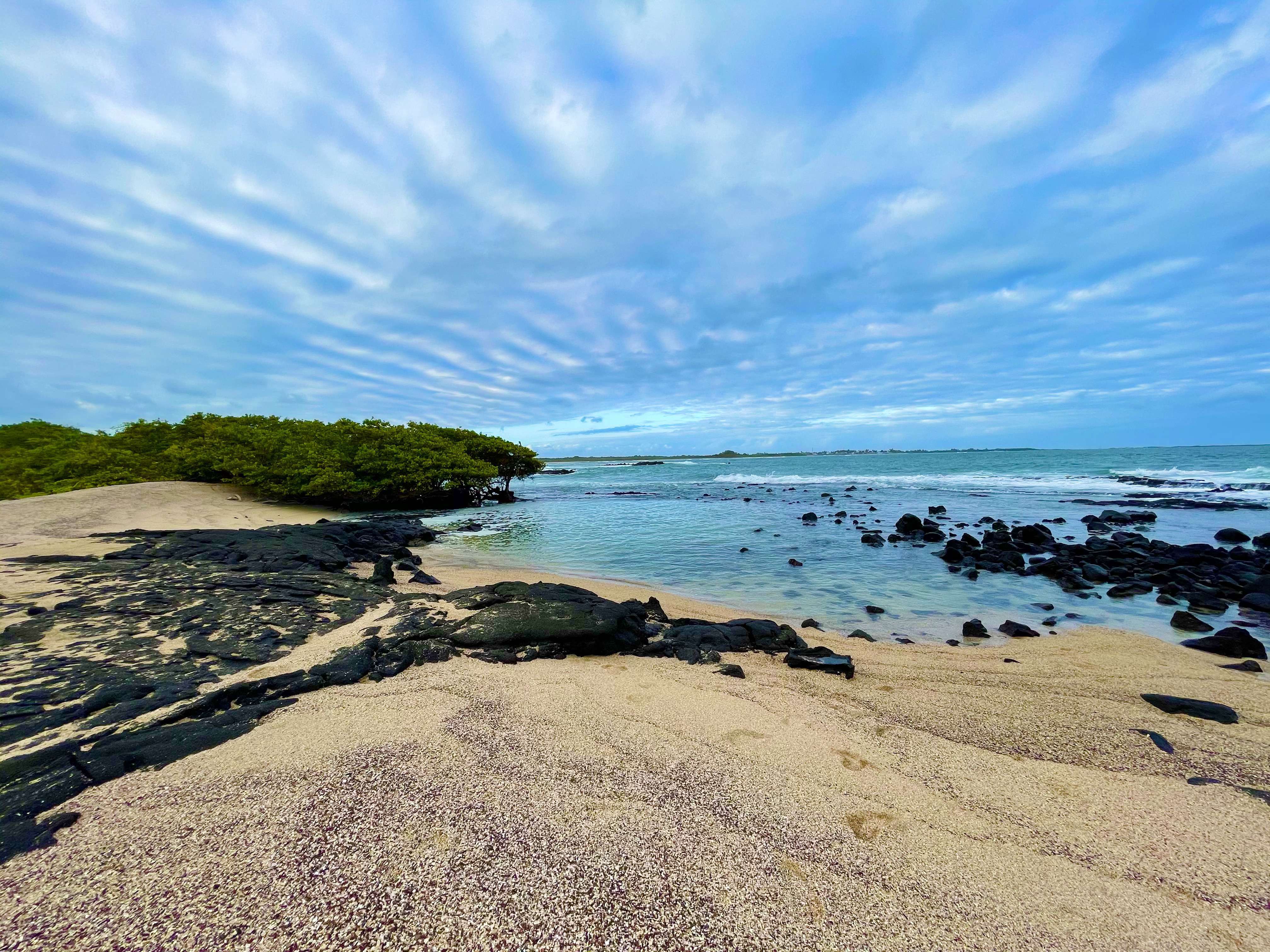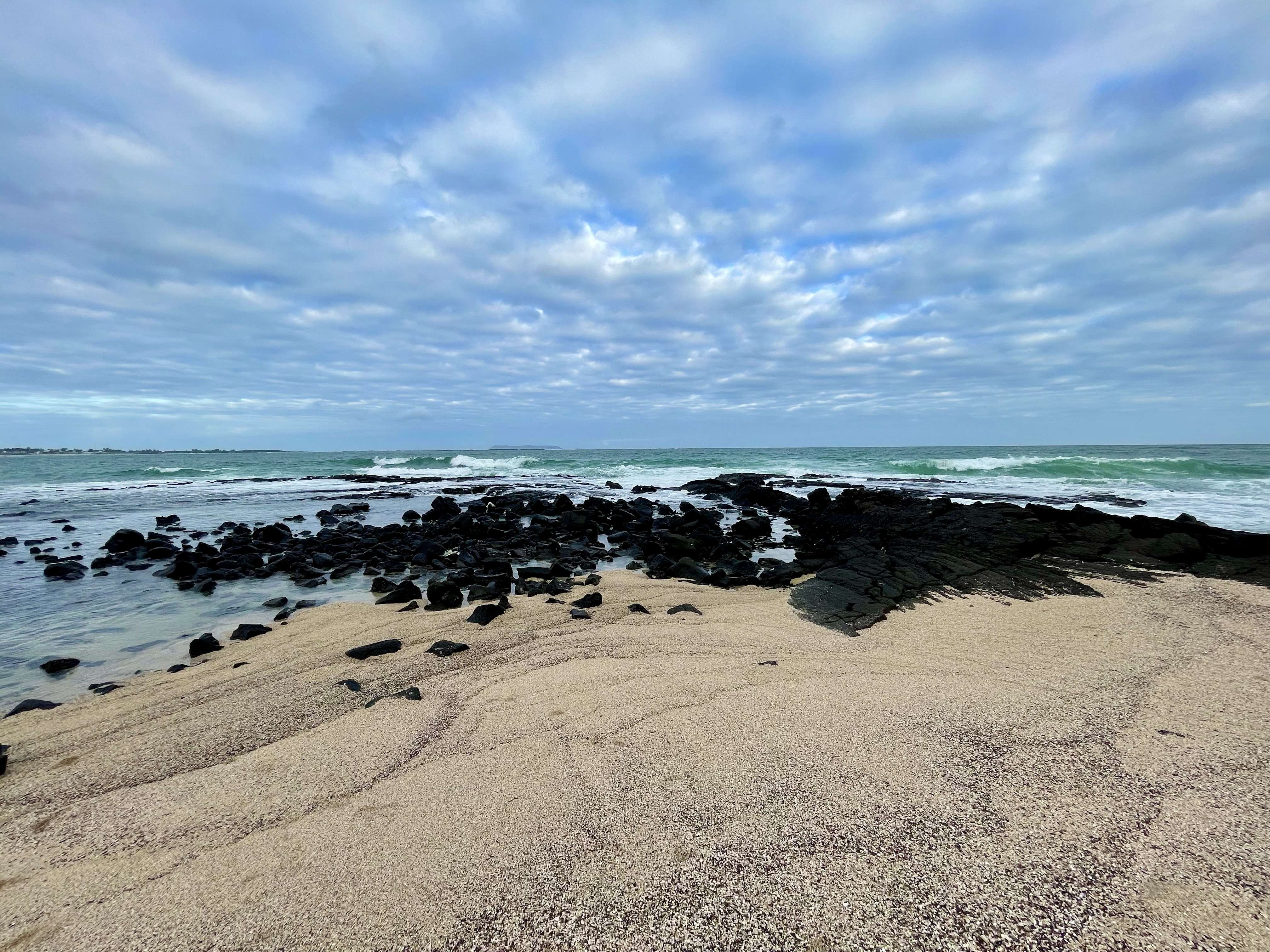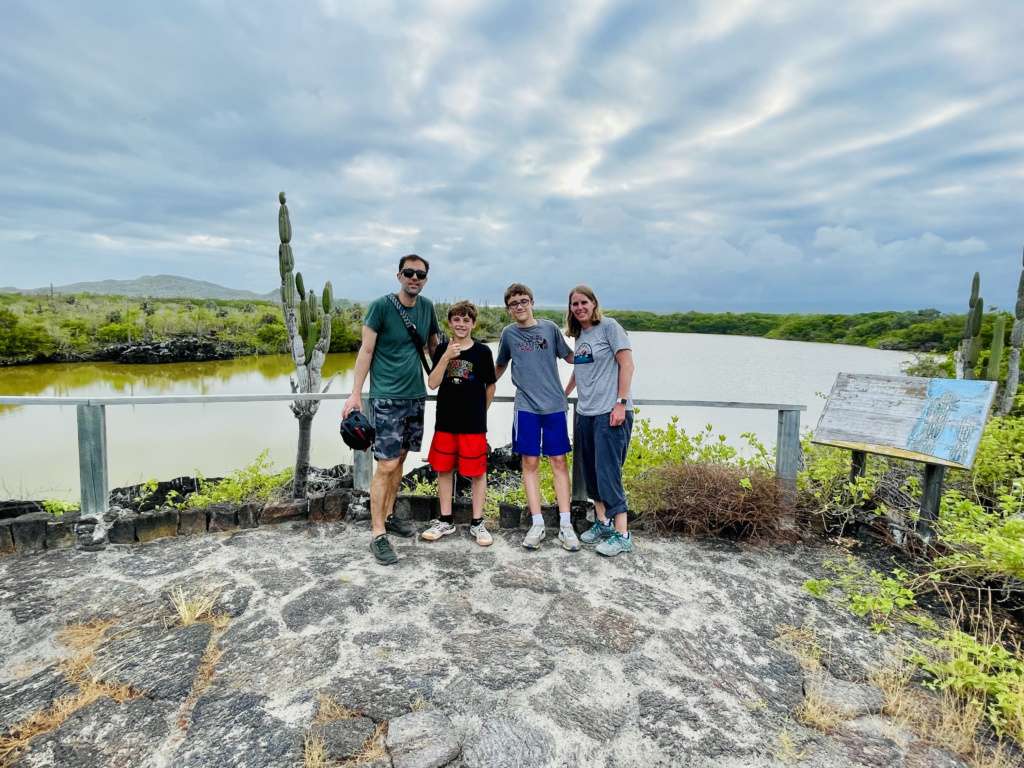After our morning tour to Las Tintoreras, we went back to Iguana Crossing for lunch and then were picked up for our afternoon tour, a guided bike ride to the Wall of Tears. We were picked up and driven to a bike shop in town where we were outfitted with bikes and helmets to start our next adventure.
The entrance to the trail to the Wall of Tears was just past our hotel so we actually doubled back to where we started. We rode through town down the (paved but covered with dirt) main street and past our hotel. We headed left at the fork in the road just past Iguana Crossing, taking the route that followed along the beach. This road was sandy and at times it was so thick that we had to get off of our bikes and walk them. Soon we came to the trailhead to the Wall of Tears. There was a restroom here, and a National Park employee was on duty at the entrance to check in visitors.
It was about 5 km to the Wall of Tears from here but there were multiple places to stop along the way to see different landscapes, beaches and viewpoints. The sand was deep again at the start of the trail but soon turned to a pretty good gravel trail (although the sand reappeared sporadically throughout the ride). It went through a pretty barren landscape dotted with cacti along the side of the road. There were some decent hills along this section but we still had fresh legs and the kids did fine on this more solid surface.
El Estero
We made our first of a few stops at El Estero, an estuary where all 4 species of Galapagos mangroves can be found. Parking our bikes and heading down the off-shoot trail, the landscape started as cactus and lava rock, and we followed another little trail out to the ocean. Here the ocean, lava rocks, and mangroves all met in a little cove where Lava Lizards, Marine Iguanas, and Sally Lightfoot Crabs scurried about. It was beautiful and I especially loved watching the brightly colored crabs scampering across the black rocks.
From here we went back to the trail and followed it through an amazing archway created by the mangrove trees. We emerged in an estuary, where the fresh water of a stream met the salt water of the ocean, creating the perfect environment for mangrove trees to thrive.
The 4 species of mangroves found in the Galapagos are the Black Mangrove, Red Mangrove, Button Mangrove, and White Mangrove. On our way through the trail and in the area surrounding the beach, our guide found a leaf and seed from each of the 4 trees and taught us about the different species.
The brackish water of the estuary was so clear that we could see lots of puffer fish swimming by.
Mirador Cerro Orchilla
We returned to our bikes and continued down the trail towards the Wall of Tears. It wasn’t long before my eagle eyed son spotted our first Galapagos Tortoise! We quickly pulled over to get a better look. As much as you can read about and see pictures of them beforehand, nothing quite prepares you for seeing them in person. They are truly amazing creatures. The largest living tortoises in the world, these massive animals can weigh up to 500 pounds and live to be over 100 years old.
We spotted two more tortoises along the side of the road on our way to our next stop, Mirador Cerro Orchilla. A steep set of stairs led us up to an amazing view of Isabela Island. From the lookout point, you can see all the way back to Puerto Villamil.
Muro de Las Lagrimas (Wall of Tears)
We headed back down and then continued biking along the trail, finally reaching the Wall of Tears. While all of our stops until this point were natural attractions, the Wall of Tears is a historic site. A penal colony was established on Isabela Island in 1946. Roughly 300 prisoners and 30 guards were sent here from mainland Ecuador as a means of relieving the country’s overcrowded prisons. Isolated on the island with little to do, the guards had the prisoners build a wall. The wall served no other purpose than to keep the prisoners busy. This task was a punishment in itself and the site was said to be where “los valientes lloran y los débiles mueren” – the strong cry and the weak die.
The prisoners were forced to carry jagged, heavy volcanic rocks from a quarry a great distance away. They faced many dangers in the building of the wall, from the physical risks of the arduous manual labor in extreme heat to the threat of falling rocks during the construction of the wall. Reaching a height of 25 meters and length of 100 meters, the stacked wall is an imposing sight. Prisoners rebelled in 1958 and the penal colony was closed the following year, but the Wall of Tears continues to stand as a testament to the prisoners who suffered and who died there.
Tunel del Estero
The bike ride out to the Wall of Tears was admittedly harder than any of us expected. Though relatively flat on the whole, there were some pretty decent hills on the trail. And the thick sand that covered the trail in several sections was really difficult to navigate on a bike. Throw in the heat and this roughly 6.5 km bike ride was a bit of a challenge for us, although a worthwhile one for sure. We were definitely glad that our guide insisted we buy more water before we headed out. And glad that he wisely split up the stops along the trail so we made some on the way out and some on the way back.
Our first stop on the way back was Tunel del Estero. The short trail took us to a lava tunnel formed thousands of years ago. A stream of lava formed a channel down towards the ocean. As the molten lava flowed, its surroundings cooled, allowing the top and sides to harden into the tunnel you can still see today.
This was a quick and easy stop and we all thought it was neat to see the lava tunnel. We were able to climb down the rocks to the entrance and look in but could not actually go inside for safety reasons. It’s worth the few minutes to see it and take a quick break from the bike ride.
Playa del Amor
Just a short distance ahead we made our next stop at Playa del Amor. The short path from the road was surrounded by lava rocks and cactus. When we got out to the beach, it was covered with marine iguanas resting on the white shell beach and on the lava rocks.
This beach had some of the most stunning views on Isabela. I could have sat there for hours just soaking it all in.
Mirador Los Tunos
Our last stop on our bike ride back was at Mirador Los Tunos. This was another short trail off the main road that led to a small lagoon. It was pretty but fairly nondescript compared to the other stops we made. We took a few family photos and continued on our way. It was most memorable because I left my backpack there with all my camera equipment, wallet, etc. When we got back to the beginning of the main trail and stopped to use the bathroom, I realized why I felt lighter for the last leg of the ride. I think I broke some personal records riding back to get it. (I wasn’t especially concerned about it being taken but I wasn’t sure how far back I had left it since the only photos I took at Los Tunos were with my iPhone and I wouldn’t have necessarily missed it there.) Thankfully we found it quickly and easily and headed back again.
While this was the last stop along the Wall of Tears trail, our tour also included a stop at the Flamingo Lagoon. Since this was our second tour of the day and was a physically active one, the boys had already had a long day and were ready to go relax at the hotel pool. Since the Flamingo Lagoon was literally right next to our hotel. we knew we would be able to easily visit it on our own so we weren’t concerned about skipping it then. We rode all the way back in to town, dropped off our bikes, and then headed back to the hotel.
Overall our first day was an amazing one. Combining two half day tours (Las Tintoreras and the Wall of Tears) was a great way to experience a wide variety of activities, wildlife, and scenery. We saw our big three (Blue Footed Boobies, Galapagos Penguins, and Galapagos Tortoises), hiked, biked, and snorkeled. What an incredible introduction to the islands!
